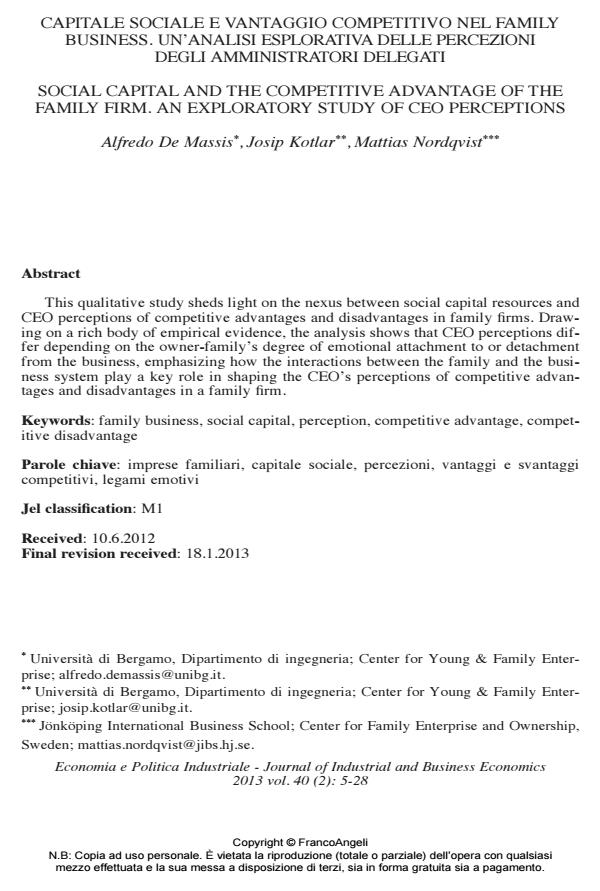Capitale sociale e vantaggio competitivo nel family business. Un’analisi esplorativa delle percezioni degli amministratori delegati
Titolo Rivista ECONOMIA E POLITICA INDUSTRIALE
Autori/Curatori Alfredo De Massis, Josip Kotlar, Mattias Nordqvist
Anno di pubblicazione 2013 Fascicolo 2013/2
Lingua Italiano Numero pagine 24 P. 5-28 Dimensione file 182 KB
DOI 10.3280/POLI2013-002001
Il DOI è il codice a barre della proprietà intellettuale: per saperne di più
clicca qui
Qui sotto puoi vedere in anteprima la prima pagina di questo articolo.
Se questo articolo ti interessa, lo puoi acquistare (e scaricare in formato pdf) seguendo le facili indicazioni per acquistare il download credit. Acquista Download Credits per scaricare questo Articolo in formato PDF

FrancoAngeli è membro della Publishers International Linking Association, Inc (PILA)associazione indipendente e non profit per facilitare (attraverso i servizi tecnologici implementati da CrossRef.org) l’accesso degli studiosi ai contenuti digitali nelle pubblicazioni professionali e scientifiche
This qualitative study sheds light on the nexus between social capital resources and CEO perceptions of competitive advantages and disadvantages in family firms. Drawing on a rich body of empirical evidence, the analysis shows that CEO perceptions differ depending on the owner-family’s degree of emotional attachment to or detachment from the business, emphasizing how the interactions between the family and the business system play a key role in shaping the CEO’s perceptions of competitive advantages and disadvantages in a family firm. Keywords: f
Parole chiave:Imprese familiari, capitale sociale, percezioni, vantaggi e svantaggi competitivi, legami emotivi
Jel codes:M1
Alfredo De Massis, Josip Kotlar, Mattias Nordqvist, Capitale sociale e vantaggio competitivo nel family business. Un’analisi esplorativa delle percezioni degli amministratori delegati in "ECONOMIA E POLITICA INDUSTRIALE " 2/2013, pp 5-28, DOI: 10.3280/POLI2013-002001